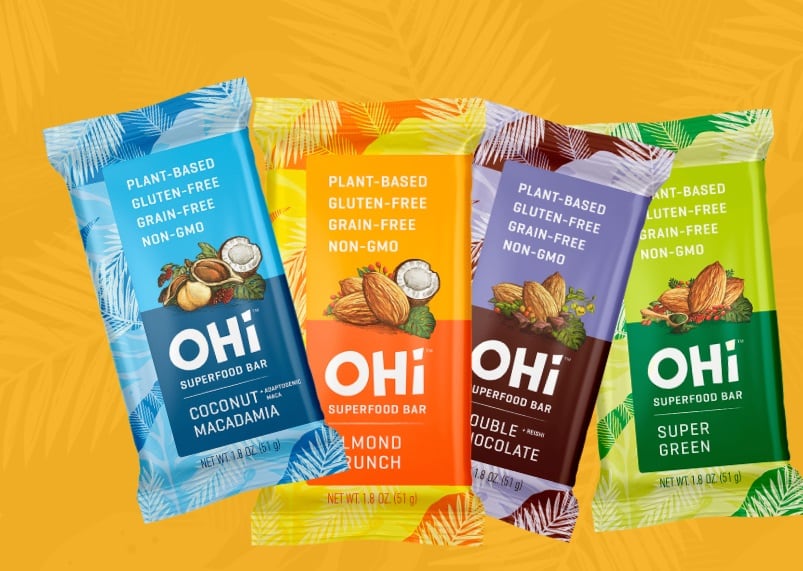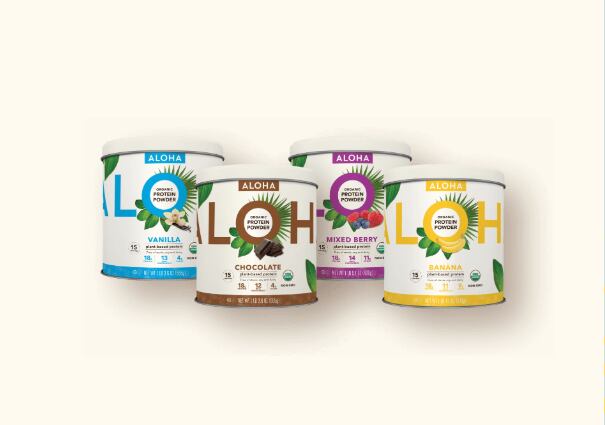“The original branding was more of a verb” as a play on the notion of be raw, and it also was part of a larger portfolio of slogans, such as bGreen, bOriginal and bKind, Anderson said. But, “Hawaii really named our bar bRaw and I went with it – I even had a license plate that said bRaw, and people would see it would say how much they loved our bar.”
But despite the great equity in the bRaw name, Anderson said as she expanded distribution she also wanted the branding to better reflect the company’s values and mission.
“I wanted a name that was more focused on my mission and what I stand for, something that was more inclusive and could be identified as a connection to my roots [in Hawaii], which is super important to me. So, I started looking at Polynesian words and Hawaiian words and Ohi struck me because it means to rise, to elevate and it means to gather in Hawaiian, and all three of those words kind of emulate my mission and the brand,” Anderson said.
She explained the brand's mission is “to elevate the community around us through elevated food and encourage people with simple foods to rise and shine and thrive,” she added.
OHi also is a nod to Hawaii, which is abbreviated HI, as well as Anderson’s first name in that Hi means dawn of the day, she added.
With so many connections, “the name just felt right to me,” she said.
But making the change was hard – especially after all the effort Anderson put into building bRAW as a brand. She said she helped smooth the transition by working closely with her retailers and talking about the change on social media. That way all her customers came along with her and were not surprised by the change.
Have the business basics down
Realizing that she needed a broader brand name was only one of the difficult lessons that Anderson learned as she built her business. She said another big one was discovering early on that it isn’t necessarily enough to have a great idea or great tasting product – but she also needed to prove to retailers that she had a basic understanding of business and would be a reliable partner.
“Back in the day when I was going door to door trying to sell my bar to retailers, one of the things that buyers told me stood out to them was that I didn’t just come with the bars. I had a sales sheet, I had a business card, I had a price point and UPC code and a finished package – all of which they said helped them remember who I was and my product, because they see a lot of people come through their door telling them to try their product,” Anderson said.
Another compelling reason that Anderson said helped convince retailers to take a chance on her was that the first time she met them also wasn’t the last.
“The second important thing that retailers told me later was that they liked that I showed up each day and checked my stock. I was going into the store, developing relationships with them, supporting the brand with demos, making sure it looked good on the shelf, all of which was a learning experience for me, but which told retailers that I was going to be there to support and build this brand,” she said.
“Retailers want to see that early entrepreneurs are committed and responsible and that if they give them shelf space, they will show up and make sure the product leaves the shelf,” which sometimes is harder than getting it on the shelf in the first place, she added.
You have to start somewhere
Another lesson that Anderson said she learned early on but didn’t fully appreciate until much later is that entrepreneurs need to start somewhere, and there isn’t necessarily a right way to go to market.
“In some ways, I sort of started off backwards. I went and found the retailers and generated demand for the bars before I knew how to manufacture them efficiently. So I had to learn later about pricing, margins and budgets. And I had to learn as I went how to meet demand. But other people take the opposite approach and first learn how to manufacture their product and have a business plan so that when the orders come in they are ready to go,” Anderson said.
She acknowledged that while both approaches work, the latter might have been “better.”
While working “backwards,” Anderson said one of the most critical lessons she learned is that taking a business class – or hiring leadership who already has a business degree – is critical, especially if the entrepreneur, like herself, is more focused on the creative side of the business.
Building a category and distribution
Now that Anderson has the product concept, branding and a business plan in place, she is focused on rapidly expanding the brand across the mainland and helping cultivate a refrigerated bar section in retail stores.
“We are so excited to have a new COO, an opps person and we brought on a social media PR team and a national sales force from Velocity and a national broker, Acosta, so we just teamed up and we are ready to grow,” Anderson said.
“I feel like the refrigerated bar set is a growing category and a great opportunity,” but there is room for development, such as creating easily identifiable and consistent sets in retailers where consumers can find the product, she said.
“It has been difficult for people to find us because sometimes we are in the dairy section or in amid the kombuchas in a function food section or with the product. So, the more we can build up our own space, the better, and to do that we are welcoming brand to help build the section and awareness. But at the same time, we are primed to become a strong force in the space,” she said.
In addition to building the category, the brand is building its distribution by expanding into Texas soon and plans to be in major retailers on the East Coast and Pacific Northwest. It also recently launched on Amazon for an immediate national reach.


